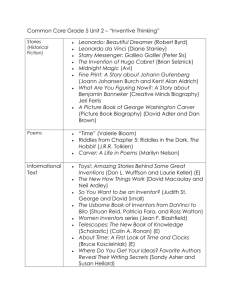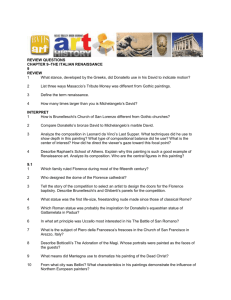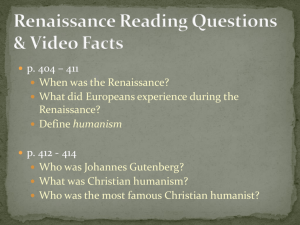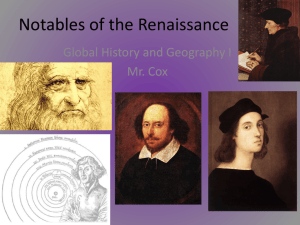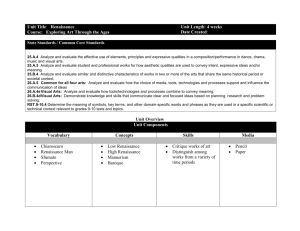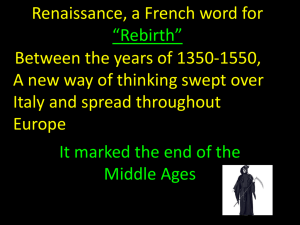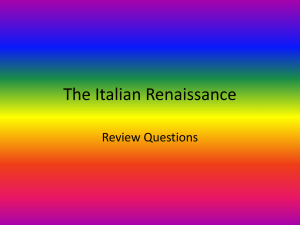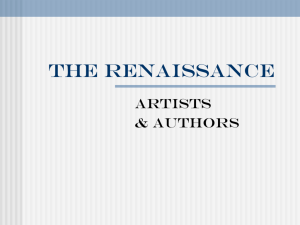Slide 1
advertisement
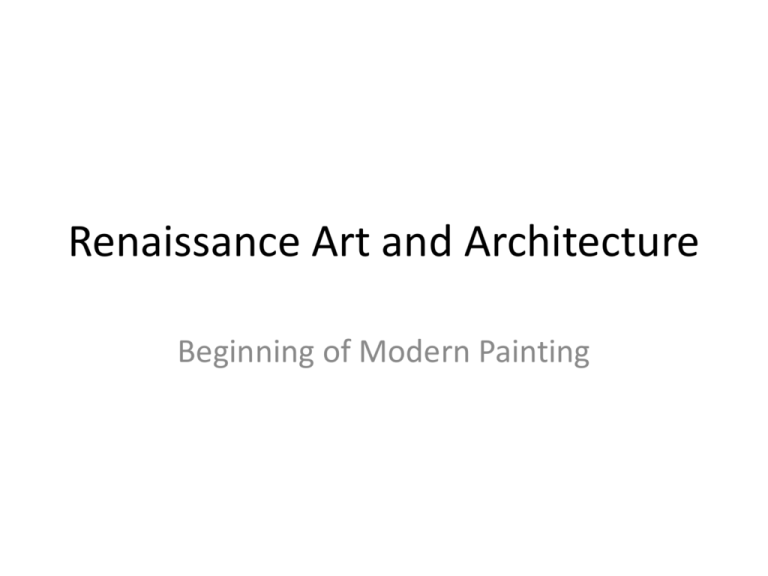
Renaissance Art and Architecture Beginning of Modern Painting Common Elements of Renaissance throughout Europe – Greco-Roman tradition (strongest in Italy) – Scientific study of human body and nature – Realistic reproduction of forms of nature – Prestige of artists moves from craftsman to genius – Technological breakthroughs • • • • Oil on stretched canvas Perspective Chiaroscuro—light emerging from dark, illusion 3-D Pyramid configuration—symmetrical, balanced composition Early Renaissance • Masaccio – Realism – Perspective – Single source of light casting authentic shadows The Holy Trinity Massaccio “The Tribute Money” Note contrapposto of figure in orange tunic, natural stance with weight on left leg and right knee bent. Expressive faces, chiaroscuro especially in rear Early Renaissance • Donatello – Sculpture – 1st life-size freestanding nude since Roman times – 1st freestanding equestrian statue since Roman times – Contrapposto, weight on one leg with body usually turned – Draped realistically, sense of skeletal structure Donatello (1386-1466) David (1430 bronze) Gattamelata (1450 bronze) Mary Magdalene Botticelli • More curvi-linear style than Masaccio or Donatello • Reintroduces classical mythology Botticelli 1444-1510 Botticelli High Renaissance • Characteristics: – Humanism – Classicism – Balanced composition – Self contained – Ideal beauty, realistic anatomy – Represents technical mastery of the techniques of the Renaissance Leonardo da Vinci Leonardo da Vinci Leonardo da Vinci • Poster child for ADHD • Aerial perspective…..thickness of the air…farther away, thicker and bluer the air – See Virgin of the Rocks • Sfumato….smoky in Italian….use of pale blues and soft grays to “veil” the landscape and blur edges for blending….not dependent on perspective….invented by Leonardo • Chiaroscuro….used most effectively by Leo to give 3-D effect, esp. with faces Michelangelo The Pieta Michelangelo David a Michelangelo Sistine Chapel: Adam Michelangelo Last Judgement Michelangelo Capitoline Hill Raphael Titian Bellini St. Francis Giorgione The Tempest Architecture • • • • Rome Rules Reason ‘Rithmetic Alberti Santa Maria Novella Brunelleschi Bramante Palladio Northern Renaissance • Based more on nature than Greco-Roman tradition • Very realistic • Oil paint • Atmospheric perspective Jan Van Eyck Hieronymous Bosch Bruegel German Renaissance Hans Holbein Albrecht Durer



